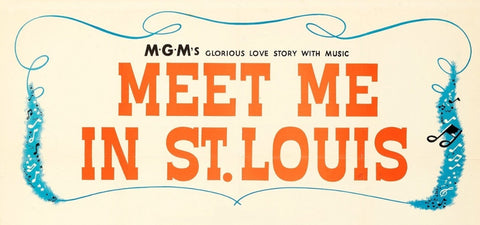
For over 100 years, the world of literature has provided a rich vein of material for cinema’s worst nightmares. With Candyman, one of the iconic screen bogeymen of the 90s, currently terrorising a new generation of movie goers, let’s take a look at some other key literary horror adaptations of the 20th century...

The Silent Era and the Early Talkies - “It’s alive!”
In the early 1920s, a German film studio called Prana was set up to make occult and supernatural movies, headed creatively by Albin Grau, an occultist artist and producer. Prana only managed one film before going bankrupt - F.W. Murnau’s silent classic Nosferatu. Already in debt after heavily promoting the film, Prana was sunk by a copyright infringement lawsuit from Bram Stoker’s estate.

It wasn’t hard to spot the similarities between Murnau’s expressionistic take on the story and Stoker’s Dracula, despite a few changes intended to skirt legal issues. Prana lost the case and the court ordered all copies of the film to be destroyed.
Nosferatu might have just become one of early cinema’s many lost movies if a lone copy hadn’t made it to the States, where Stoker’s work had already entered the public domain.
Even at almost a century old, Nosferatu remains one of the best adaptations of Stoker’s novel. Its haunting imagery - particularly the strange, feral appearance of the vampire, Count Orlok - has passed into the collective conscience, referenced in everything from The Shining to Spongebob Squarepants. Although scratchy and technically crude, the film still stirs a primal feeling of terror, and watching it takes you on a journey back to a time before Count Dracula became a pop culture icon as played out and de-mystified as Frankenstein’s Monster.
Mary Shelley’s Frankenstein received its definitive screen version during the early days of talking pictures. The early 30s was an interesting time for American cinema in general, with the advent of sound recording and a sweet spot of relatively lax censorship before the draconian Hays Code was introduced in 1934.

This was the golden age of Hollywood horror, and Universal had a string of spine-tingling hits - both literary adaptations and otherwise - including Dr Jekyll and Mr Hyde, The Mummy and The Invisible Man. Having scored a box office sensation with their 1931 version of Dracula which made Bela Lugosi a huge star, next up was Frankenstein. Lugosi was originally attached to play the monster, although he wasn’t happy with the early script, which removed humanity and pathos from the role. Lugosi was eventually replaced with Boris Karloff when James Whale took over the directorial duties from Robert Florey.
Both Whale and Karloff turned out to be inspired replacements. Whale insisted on reinstating the element of pathos in keeping with Shelley’s novel, something that Karloff played so beautifully in his signature role.
Like Dracula, Frankenstein’s Monster has become so ingrained in pop culture that he has lost much of his menace. Nowadays he’s often a visual joke, a Halloween mask. It is worth revisiting Whale’s film just to see how powerful and harrowing it is, even 90 years later.
Some other notable adaptations from this time include: Paramount’s 1920 version of Dr. Jekyll and Mr. Hyde with John Barrymore; The Hunchback of Notre Dame (1923) with Lon Chaney as Quasimodo; and the famous 1925 version of The Phantom of the Opera, again with Lon Chaney in heavy makeup.
Wartime and into the Atom Era - “Keep watching the skies.”
The '40s were a relatively quiet period for literary horror adaptations. There were loads of sequels, remakes and crossovers such as Abbott and Costello Meet Frankenstein, which also featured Dracula, the Invisible Man, Dr Jekyll and Mr Hyde, the Mummy and the Wolf Man. Oscar Wilde got a look-in with a star-studded and well-received adaptation of The Picture of Dorian Gray.

During the Atom era American cinema of the 50s, there were several highly regarded and influential adaptations as the face of horror movies changed. As interest in UFOs and skepticism about the dangers of atomic warfare all grew, the lone gothic antagonists of classic novels became largely a relic. New movies featured giant creatures, mutants, bug-eyed monsters, scientific cautionary tales, and visitors from other planets both benevolent and malign.
One of the key sci-fi films of the 50s was The Thing from Another World. Nominally directed by Christian Nyby but bearing the significant fingerprints of Howard Hawks, it was a loose adaptation of Who Goes There? a 1938 sci-fi novella by John W. Campbell. The screenplay ditched Campbell’s horrific central premise of a shape-shifting creature that could assume any form. Instead, they replaced it with a lumbering guy in a monster suit.
It still had some very effective imagery, such as the title burning through the screen and a figure in flames running through the snow, both of which would be quoted in John Carpenter’s 1981 remake. Carpenter restored Campbell’s shapeshifter with the help of brilliant special effects from Rob Bottin, but the violence and splatter was a little too much for critics and audiences at the time.
The concept of an alien creature assimilating and reproducing hapless victims was a popular one during the 50s, variously interpreted as metaphors for McCarthyism or Communism. Another strong movie that explored this theme was Don Siegel’s Invasion of the Body Snatchers, adapted from the novel by Jack Finney. Its nightmarish scenario had alien seed pods falling on a small American town and replacing the locals with soulless copies.

Unlike Nyby / Hawk’s vision of humanity bonding against a common foe, Siegel’s film was far bleaker, tapping into the paranoia of the time. The Body Snatchers have continued to strike a chord throughout the decades - it was also remade in 1978, 1993 and 2007.
The celebrated author Ray Bradbury had a busy decade in the 1950s with The Martian Chronicles, Fahrenheit 451 and The Illustrated Man. He also wrote The Foghorn, an eerie short story that formed the basis for the classic Ray Harryhausen creature feature The Beast from 20,000 Fathoms, in which a dinosaur thawed out by nuclear testing in the Arctic goes on a rampage through New York.

One nailed-on horror masterpiece from the time that didn’t focus on bug-eyed monsters or mutant creatures was Jacques Tourneur’s Night of the Demon. It was a witty and atmospheric modern re-telling of Casting the Runes, a tale from the English master of the ghost story, M.R. James. Strangely, it is just about the only noteworthy cinematic adaptation of his works, although the BBC made several superb small screen versions in the '60s and '70s.
1960s - “We all go a little mad sometimes…”
In 1957, a man named Ed Gein was arrested for the murder of hardware store owner Bernice Worden. When the authorities investigated his property, they found what was left of her and dozens of other ghoulish trinkets decorating his home.
Gein’s gruesome escapades as a murderer and grave-robber were namechecked in the novel Psycho by Robert Bloch. Bloch lived nearby but claimed he was unaware of the Gein case until the book was almost complete, despite similarities between Gein and the novel’s antagonist, Norman Bates.

Alfred Hitchcock thought the story had so much potential that he snapped up the rights and ordered his assistant to buy every copy of the book she could find to prevent spoilers. Paramount didn’t want to make the movie version, so the Master of Suspense financed the production himself and waived his usual fee, taking a stake in the film negative instead. Hitchcock’s persistence paid off. Psycho was a huge hit and remains one of the most influential horror movies of all time. He also had a more moderate success a few years later with The Birds, a suspenseful tale of avian terror from the novel by Daphne du Maurier.
Many of the great 60s horrors hark back to the gothic tones of earlier eras rather than the shiny and bombastic sci-fi influenced movies of the 50s. Henry James’s The Turn of the Screw received an excellent screen version, The Innocents, starring Deborah Kerr as a brittle governess who fears that her two young wards are becoming possessed by ghosts. Shirley Jackson’s The Haunting of Hill House also received fantastic cinematic treatment with The Haunting, a film that relied heavily on the viewer’s imagination to provide the scares.
Low-budget indie mogul and filmmaker Roger Corman was moving into colour productions by the 60s, delving into the works of Edgar Allan Poe for inspiration. Titles included House of Usher, The Pit and the Pendulum, The Premature Burial, and The Masque of the Red Death. The films are noted for their eye-popping use of colour and the frequent appearances of Vincent Price.
Some other notable adaptations: Village of the Damned, from John Wyndham’s The Midwich Cuckoos; Rosemary’s Baby from Ira Levin’s blockbuster of the same name; Black Sunday and Viy, both from Nikolai Gogol’s Viy; Eyes Without a Face, from the novel by Jean Redon.
1970s - “The power of Christ compels you!”
During the 1940s, a boy from Maryland began encountering a series of supernatural events after the death of his aunt. As the phenomena escalated, “Roland Doe” went through a series of exorcisms to banish the evil spirit. During the ceremonies, the boy’s bed shook and Roland became increasingly violent, speaking in a low guttural voice and injuring a priest.

The case has since been debunked, but it provided some of the inspiration for William Peter Blatty’s novel, The Exorcist. William Friedkin’s adaptation became the first horror movie to receive a Best Picture nomination at the Oscars, despite accusations of blasphemy and controversial scenes such as the story’s tween victim masturbating with a crucifix.
A few years later, another screen version of a bestselling novel introduced the concept of the summer blockbuster that continues to this day. The book was Peter Benchley’s Jaws, which Steven Spielberg managed to get to the screen despite a traumatic production. A few key changes were made in the script to make the story more likeable - most notably, the affair between Oceanographer Matt Hooper and Ellen, the Police Chief’s wife, was ditched.

Around the same time, a young writer from Maine named Stephen King had published his first novel, the story of a socially awkward, telekinetic teen called Carrie. It was the first of his 63 books, many of which have found their way to the screen in some form. Brian De Palma’s film version of Carrie was his first major box office success, coming off the back of Phantom of the Paradise, his crazy rock opera version of Leroux’s classic novel.

Other notable adaptations in the '70s include Don’t Look Now, Nicolas Roeg’s chilly horror thriller based on Daphne Du Maurier’s short story, and excellent remakes of Invasion of the Body Snatchers and Nosferatu by Phillip Kaufman and Werner Herzog respectively.
1980s - “All work and no play makes Jack a dull boy…”
After the lukewarm reception for his long-winded Barry Lyndon, Stanley Kubrick was looking for a commercial hit to revitalise his box office fortunes. He checked out several horror novels before landing on another Stephen King book, a story about a frustrated, ex-alcoholic writer who takes a job as caretaker at a remote Colorado hotel during the winter.

King wrote The Shining while suffering from alcoholism and the novel has an authentic autobiographical edge to it. He famously hated Kubrick’s version because it reduced that element and cast Jack Nicholson, who played the doomed central character as a guy who was halfway nuts before he even got to the Overlook. For Kubrick’s part, he was a master filmmaker who took what he wanted from the source material and discarded the rest. Major changes for the better include switching the murder weapon from a croquet mallet to an axe, and the hotel’s living topiary animals to a hedge maze.
In the mid-80s, director Stuart Gordon, who had made a controversial name for himself with his experimental theatre productions, made his transition into film with two gleefully schlocky H.P. Lovecraft adaptations. Re-animator was the splattery tale of Herbert West, a mad scientist hell bent on creating a formula that can bring the dead back to life; From Beyond had another pair of scientists creating a machine that could help the user see past their usual range of perception, but also unleashed extra-dimensional creatures. The movies established Jeffrey Combs as a cult favourite.

Clive Barker adapted his own tale, The Hellbound Heart, in his directorial debut. Hellraiser was an assured start from the novelist, a perverse horror for grown-ups that has lost little of its nightmarish power today. It introduced the iconic figure of Pinhead, leader of the Cenobites, a gang of horribly disfigured inter-dimensional pain freaks.
1990s - “Quid pro quo...”
In 1963, Thomas Harris, a journalist working the crime beat went to Mexico to report on a convicted American murder called Dykes Askew Simmons. During the visit, he also met a small, neat doctor who had saved Simmons’ life after a failed escape attempt. The physician, Dr. Alfredo Ballí Treviño, was also an inmate, having murdered his lover and cut his body into small pieces.
This chance encounter with the good doctor inspired Harris’s famous character Hannibal “The Cannibal” Lecter, who made his debut in the 1981 novel Red Dragon, before creating a larger impression in its sequel, The Silence of the Lambs.

The latter was adapted for the screen in 1991 by Jonathan Demme starring Anthony Hopkins as Lecter and Jodie Foster as Clarice Starling, the novice FBI Agent sent to interview him. It was a massive critical and commercial success. To date, it is only one of three films to win the “Big Five” Oscars - Film, Director, Actor, Actress and Screenplay - joining It Happened One Night and One Flew Over the Cuckoo’s Nest.
All this brings us full circle, to a time in the mid-nineties when teenagers would routinely dare each other to stand in front of a mirror and say the name “Candyman” five times…

The incantation came from Candyman, Bernard Rose’s adaptation of Clive Barker’s short story, The Forbidden. It transposed the story from a run down Liverpool council estate to the deprived Chicago housing project of Cabrini-Green, and evoked the spooky urban legends that we all grew up with.
The change of location was a gamble that paid off, switching Barker’s look at the underbelly of the British class system for Rose’s themes of race and social injustice in America. It also gave us Tony Todd’s eponymous ghostly killer, who joined the rogue’s gallery of slasher villains alongside the likes of Jason Vorhees and Freddy Krueger.
Some other notable adaptations from the 90s include: Cathy Bates winning an Oscar for her role as “number one fan” Annie Wilkes in Rob Reiner’s Misery, based on the novel by Stephen King; Tom Cruise and Brad Pitt as bloodsuckers in Neil Jordan’s flashy version of Interview with the Vampire, Anne Rice’s bestseller; and Francis Ford Coppola’s equally opulent Bram Stoker’s Dracula.
This article is just a small selection of the many literary horror adaptations. Have we missed your favourite? If so, let us know!




